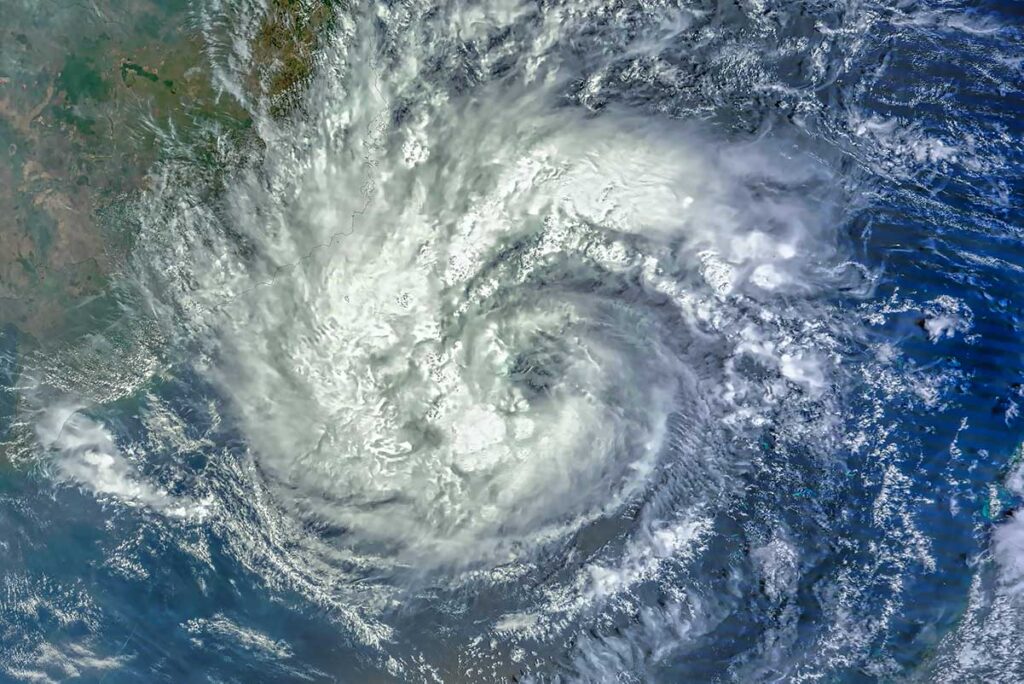Typhoons in Vietnam – Background and Reality
Vietnam gets typhoons because of its long coastline facing the South China Sea, right in the path of storms forming in the northwest Pacific. A typhoon is simply the regional term for a tropical cyclone — when wind speeds are lower, it’s called a tropical storm or depression, but the effects can still include heavy rain, flooding, and strong winds. Major storms like Linda (1997) in the south, Damrey (2017) in the center, and Yagi (2024) in the north show that typhoons are a recurring part of life in Vietnam — not rare, but also not constant disasters.
How often do typhoons hit Vietnam?
Vietnam experiences an average of four to six typhoons per year, according to the National Center for Hydro-Meteorological Forecasting (NCHMF). Many storms weaken before reaching land or pass by with minimal impact, but a few each year still cause flooding, delays, or damage — especially in coastal areas. Typhoons are usually tracked several days in advance, and during La Niña years, both storm frequency and intensity tend to increase.
When is Vietnam’s typhoon season?
Vietnam’s typhoon season runs from June to November, with the highest risk typically between August and October. These storms are driven by monsoon winds that pull tropical systems westward from the Pacific, sometimes strengthening as they approach Vietnam’s coastline. While the rainy season overlaps with typhoon season, not all heavy rain means a typhoon — most wet days are just part of the normal monsoon pattern, not major storm events.
Where do typhoons hit in Vietnam?
Typhoons can strike anywhere along Vietnam’s coast, but some regions are hit more frequently — and more intensely — than others. Here’s how the risk varies by region:
Northern Vietnam (Hanoi, Halong Bay, coastal provinces)
Typhoons in northern Vietnam typically arrive between June and August, though some systems pass through later in the season. While less frequent than in the central region, storms here can still cause flooding, flight delays, and Halong Bay cruise cancellations. Coastal provinces like Quang Ninh and Nam Dinh are more exposed than inland cities like Hanoi.
Central Vietnam (Hue, Da Nang, Hoi An, Quang Nam)
This is Vietnam’s most typhoon-prone region, with storms regularly making landfall between September and November. Central coastal cities face strong winds, river floods, and storm surges, especially when typhoons coincide with heavy upstream rain. It’s common for beach resorts to close temporarily, and boat tours (like Hoi An’s river cruises) are often suspended during warnings.
Southern Vietnam
Southern Vietnam is rarely hit directly by typhoons, but it can still experience heavy tropical rain and occasional flooding. Most storms weaken before reaching this far south. A major exception was Tropical Storm Linda in 1997, which struck the Mekong Delta and caused severe destruction — but this remains an outlier in Vietnam’s storm history.
What happens when a typhoon hits?
Typhoons in Vietnam don’t always cause severe damage, but they can bring short-term disruption depending on where you are. The effects vary between cities, coasts, mountains, and the countryside. Here’s what actually happens before, during, and just after a storm — so you know what to expect without unnecessary worry.
Transport disruptions
Flights, trains, and buses are often delayed or canceled when a typhoon approaches — especially in central Vietnam. Airports like Da Nang, Hue, and Vinh may temporarily shut down. Train routes through mountainous or coastal provinces can be paused, particularly if flooding or landslides affect tracks. Road travel may also slow down due to debris or waterlogged routes, though services usually resume within 1–2 days after the storm clears.
Tours and Cruises
Boat cruises, especially in Halong Bay, are almost always suspended when a typhoon is forecast. Smaller boat tours in Hoi An, Hue, or the Mekong Delta are also canceled early as a safety precaution. Some outdoor tours — like motorbike loops or day hikes — may be called off or rescheduled depending on local conditions.
Beaches and Coastal Roads
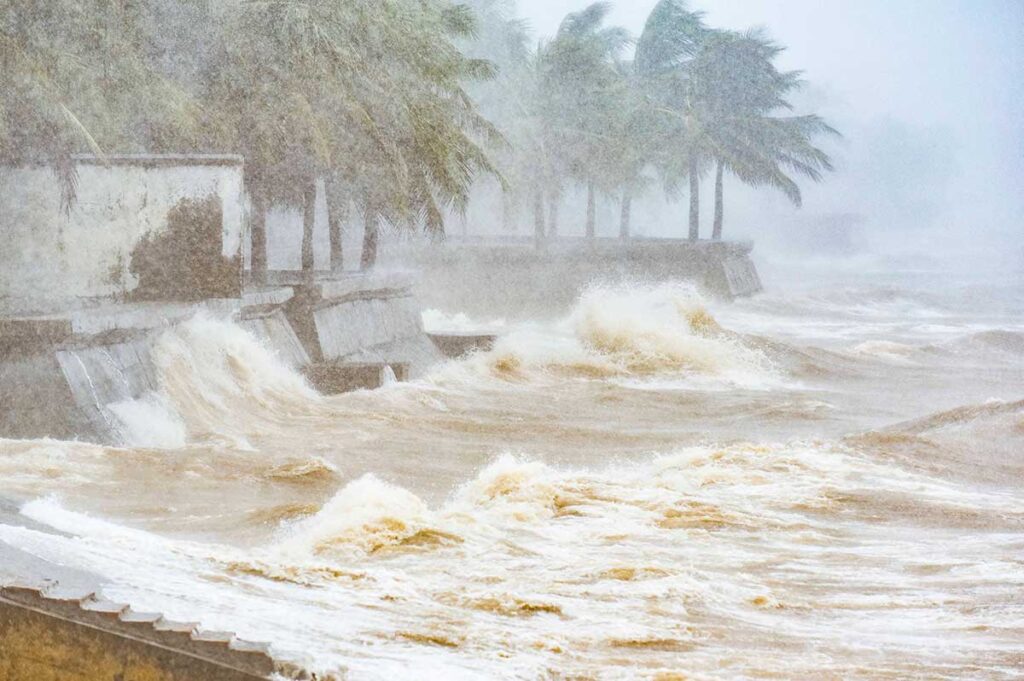
Strong waves and storm surges can swallow beaches completely during a typhoon, with walkways and roads along the coast closed off for safety.
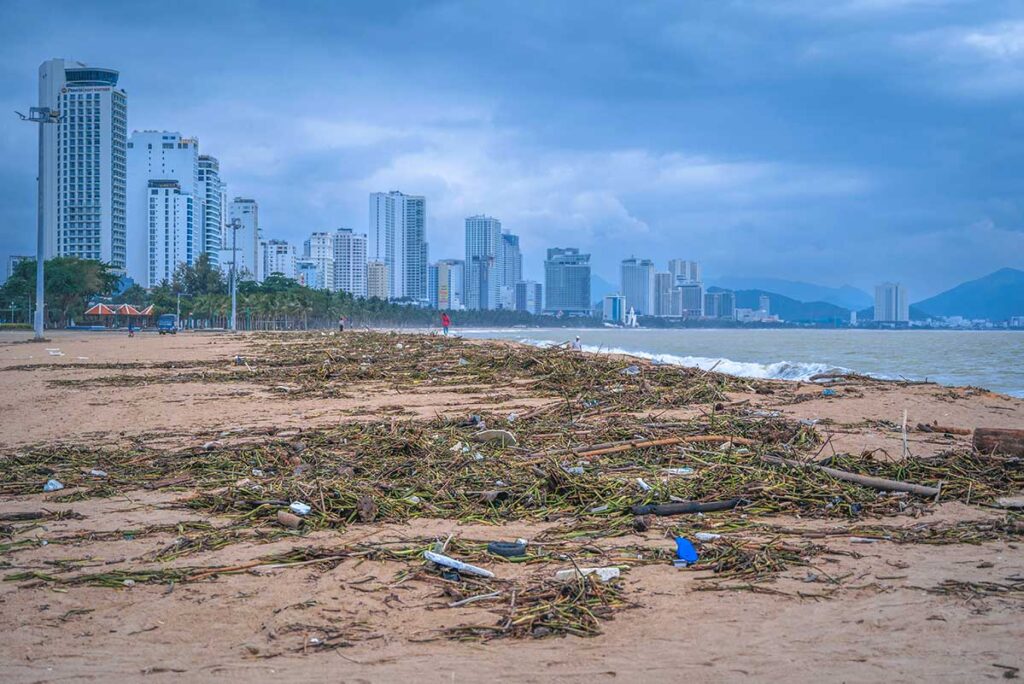
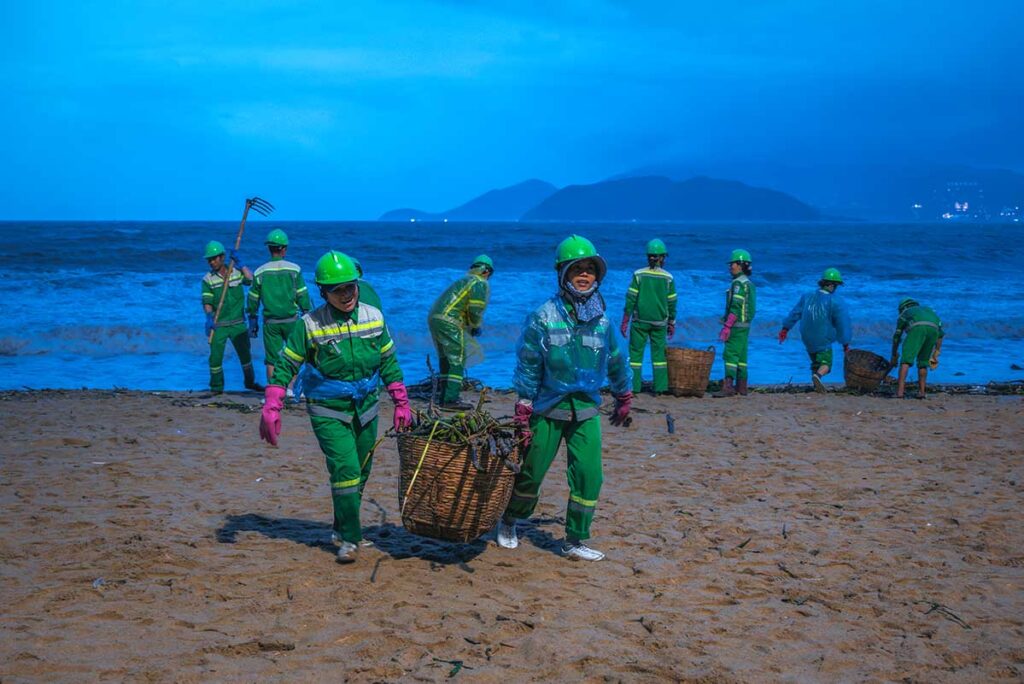
After the storm, beaches may be covered in debris, and water quality can be poor for a few days. Resorts often rope off beach access and cancel water activities until it’s safe again. Coastal roads (like parts of Hai Van Pass or Quang Binh’s seaside highway) may also be closed due to flooding or landslides.
City Impact (Urban Areas)
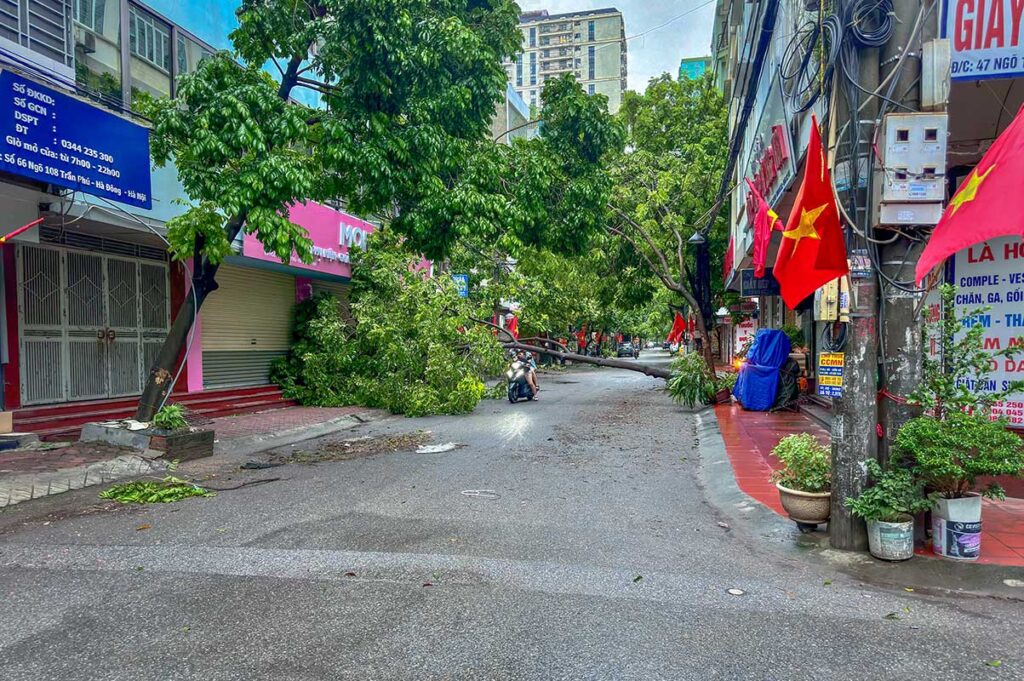
In cities like Hue, Da Nang, or even Hanoi, the biggest risks during a typhoon are falling trees or branches caused by strong winds. Occasional power outages or downed cables are possible, especially in older neighborhoods. Street flooding can occur, but it’s usually shallow and clears within hours.
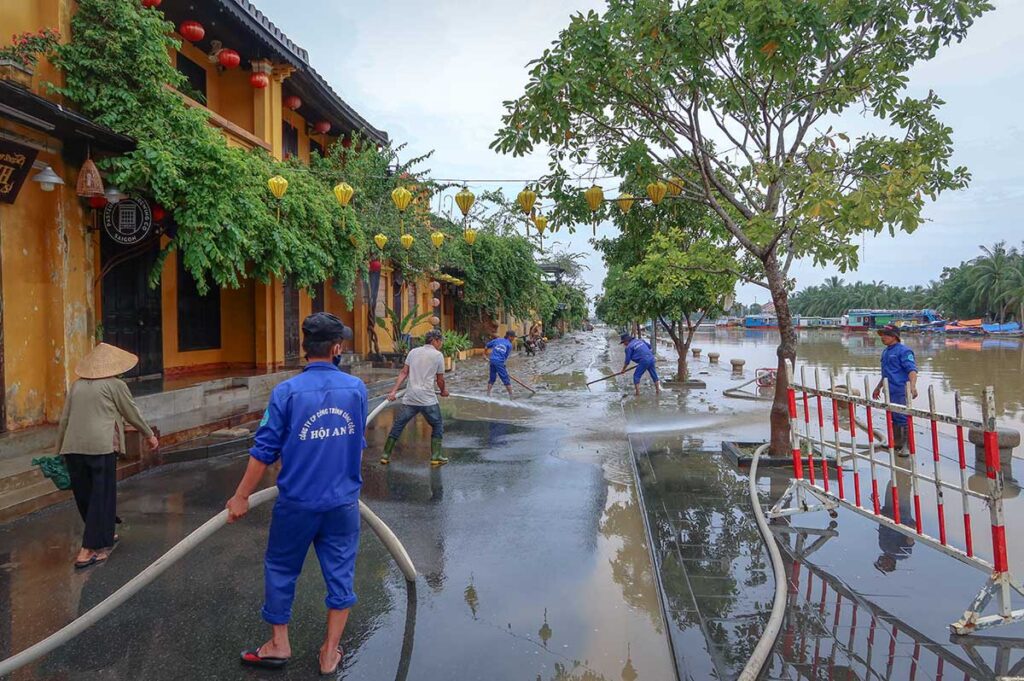
After a storm, you may see leaves, branches, and minor debris across sidewalks and roads — cleanup crews usually respond quickly.
Mountain Regions
In mountainous areas like Sapa, Ha Giang, or the Central Highlands, the main danger is landslides. These often happen after heavy rain, not during the peak of the storm, and may block roads or trekking paths. While rare in towns, they’re a known risk on remote roads or steep terrain. Travel plans involving long drives or treks should be checked carefully around storm periods.
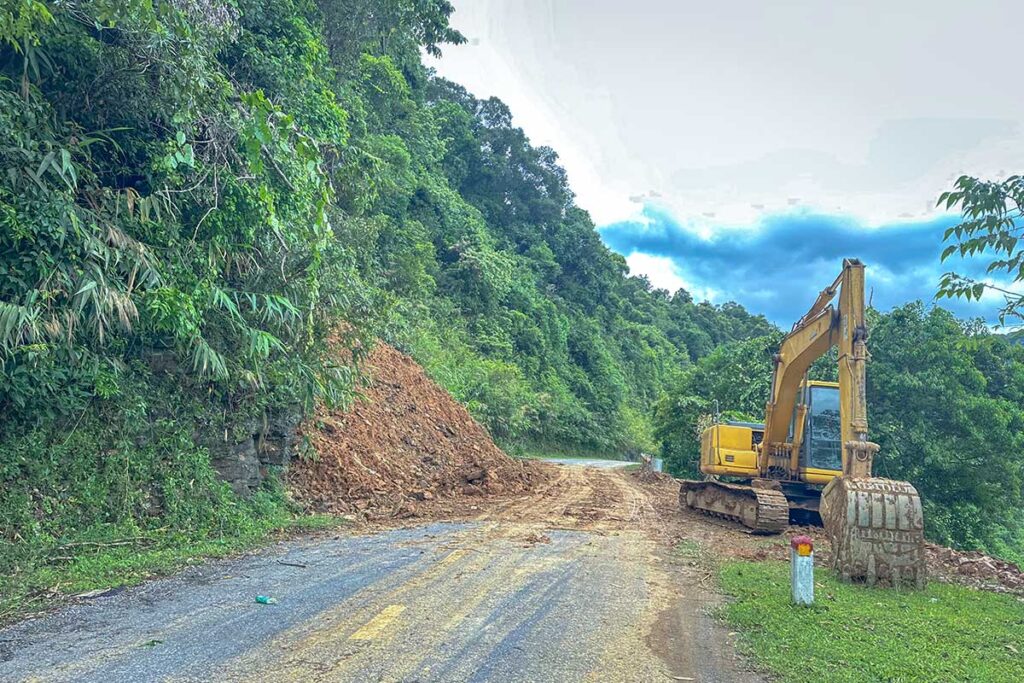
Rural and Countryside Areas
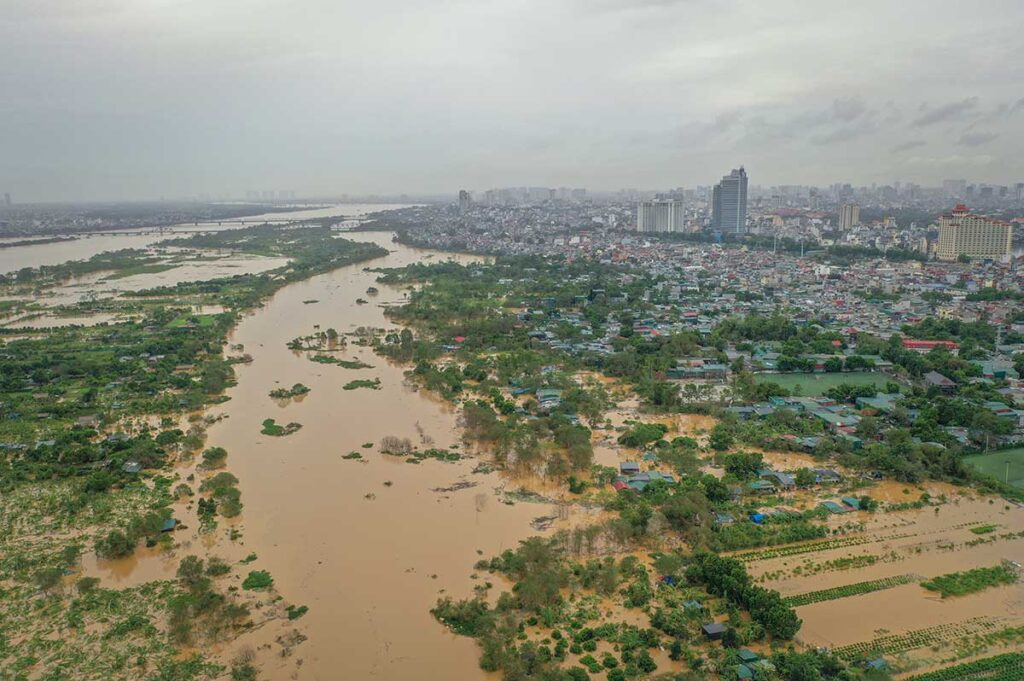
The countryside, especially in central Vietnam or along rivers, can experience deeper flooding than cities. Villages may be temporarily cut off if water levels rise too high, and farming areas may flood for several days. While most locals are prepared for this and stay safe, it can affect homestays, rural transfers, or access to national parks. In many cases, locals raise furniture, move animals, and wait it out — life resumes quickly once water levels drop.
Should you travel to Vietnam during typhoon season?
Yes — with a bit of flexibility. Typhoons in Vietnam only happen a few times per year, and most travelers on a 2–3 week trip never encounter one at all. Even if a storm affects one area, chances are high that another part of the country will have clear skies — Vietnam is long, and weather varies by region.
Storms are tracked days in advance, often starting near the Philippines, giving travelers and tour operators time to adjust. As long as you’re open to shifting plans if needed, typhoon season doesn’t need to stop your trip — it just means traveling smarter.
How Vietnam handles typhoons
Vietnam has a well-organized response system for typhoons, with government agencies issuing clear forecasts, safety alerts, and — when necessary — evacuation orders. Local communities are highly resilient, and cleanup efforts begin almost immediately after a storm passes.
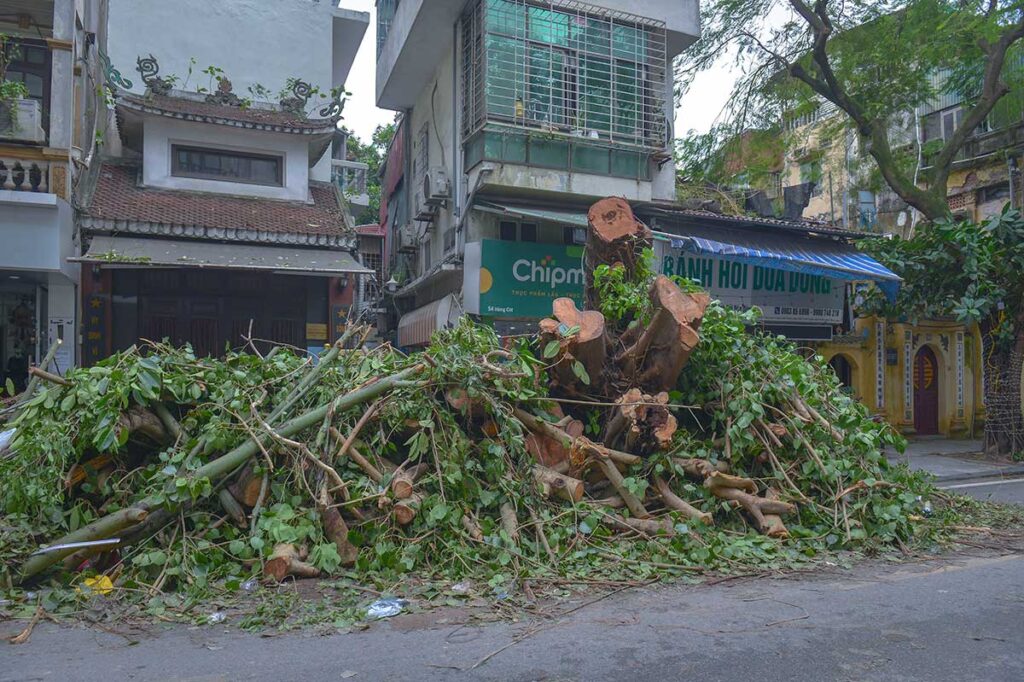
Hotels, travel agencies, and drivers are used to adjusting plans quickly, so most disruptions are short-lived. Typhoons here are not ignored or taken lightly — they’re simply part of life, and people know how to manage them.
Travel tips for Vietnam’s typhoon season
Typhoon season doesn’t mean you need to cancel your trip — just plan with a little more flexibility. These simple tips can help you avoid disruptions and make the most of your time in Vietnam, even if the weather shifts.
Stay flexible with bookings
Choose flights, hotels, and tours with free cancellation or easy date changes. Storm paths can shift last minute, so flexible plans give you options without added cost.
Monitor weather forecasts
Use reliable apps like Windy, AccuWeather, or the Vietnamese NCHMF website for updates. Your hotel or local guides can also give real-time advice based on local alerts.
Choose your region wisely
If the central coast is under storm warnings, consider heading south. Ho Chi Minh City, the Mekong Delta, and Da Lat are much less affected by typhoons.
You can also read our guide about: best time to visit Vietnam
Have a backup plan
If beaches or boats are off-limits, explore cities with good indoor activities — museums, cafés, cooking classes, or cultural shows. Keep some flexibility in your itinerary.
Pack for storms
Bring waterproof shoes, a sturdy raincoat or poncho, and a dry bag for electronics and documents. Sudden downpours are common, and you’ll be glad to stay dry.
Use a local agency for support
Traveling with a Vietnam-based agency means you’ll have help rerouting if your plans get disrupted. They’ll know which areas are safe and how to adjust things without stress.
